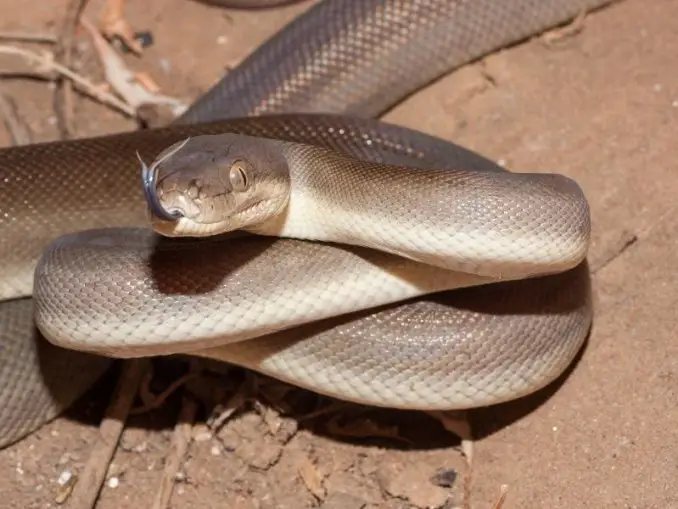
Description:
Scientific name: Liasis olivaceus
Life span: 15 – 20 years
Australia’s third-largest snake species is called Olivaceus (surpassed only by the amethystine python and Oenpelli python). Its skin seems smoother than that of other pythons due to the large number of dorsal scale rows (61–72 at midbody). There are 355–377 ventral scales. The belly is often cream-colored, and the color pattern ranges uniformly from chocolate brown to olive green. A huge female can weigh more than 20 kilograms (44 lb) in captivity, with the average adult weight being 10-20 kilograms (22-44 lb). Unfortunately, this species can occasionally be mistaken for the poisonous king brown snake, Pseudechis australis, leading to accidental killings.
Native Region/Habitat
There are olive pythons all over northern Australia, from Queensland to Western Australia. prefers rocky regions close to water, but it can also be found in savannah, open forests, and woodlands.

Behavior:
Olive pythons are harmless to humans, non-venomous, and ground-dwelling. They typically hunt at night and prey on animals, birds, and other reptiles. Olive pythons typically have calm personalities.
Care As a pet/In captivity:
The olive python is frequently reared in captivity and kept as a pet.
- Due to its size, habitat needs, and robust feeding behavior, it is technically an advanced-level species. It needs a terrarium that is at least 2.4 meters (8 feet) long, 1 meters (3 feet) high, and 1 meters (3 feet) broad. It has a reputation for being amiable, inquisitive, and peaceful when raised appropriately. Snake hooks should be used to remove it from its enclosure to avoid inducing the feeding reaction. Once outside, it may usually be handled calmly and freely because of its placid demeanor.
- Using subsurface heating cables or pads and spot bulbs that are out of the snake’s reach, create a temperature gradient throughout the enclosure. The warmer side of the cage should remain at 95°F, while the cooler side should be set to 77°F.
- As opportunistic eaters, olive pythons will try to devour everything that will fit in their mouths. Every two to three weeks, feed fully defrosted birds, rats, quail, and frogs to adult olive pythons.
Table





